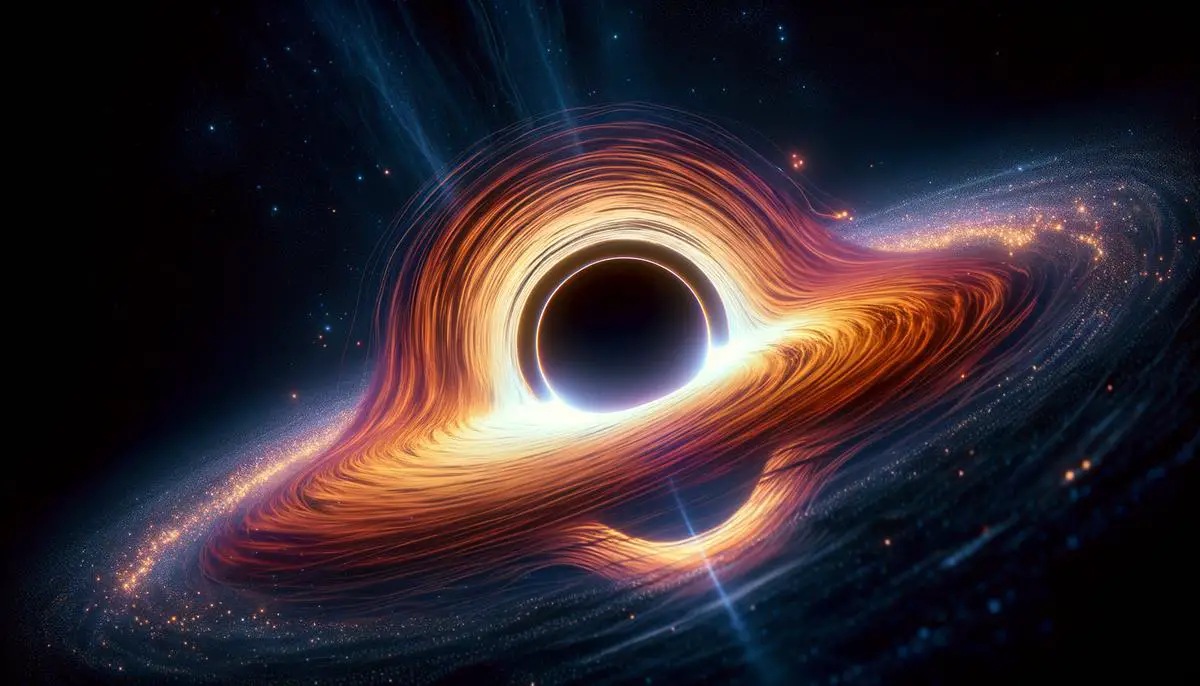Black holes, those enigmatic celestial objects, captivate our curiosity with their extreme gravitational forces and mysterious nature. Formed from the collapse of massive stars, these cosmic phenomena challenge our understanding of physics and push the boundaries of scientific inquiry. By examining their formation, behavior, and theoretical alternatives, we gain deeper insights into the universe's profound mysteries.
The Nature of Black Holes
Black holes form when a massive star runs out of fuel and collapses under its own gravity. This collapse crushes the star's core, leaving a region in space where the gravitational pull is so strong, not even light can escape. This phenomenon results from the workings of general relativity. Einstein's theory describes gravity not as a force but as the curvature of spacetime caused by mass.
At the core of a black hole lies a singularity, where matter is compressed to an extreme degree. Surrounding the singularity is the event horizon, a boundary beyond which nothing can return. The Schwarzschild radius, calculated from a black hole's mass, defines this event horizon.
Black holes absorb matter around them, yet this infalling matter spirals in due to the conservation of angular momentum, generating powerful X-ray emissions that scientists can detect.
Types of Black Holes:
- Schwarzschild black holes: Non-rotating with a point singularity at the center
- Kerr black holes: Spinning black holes with a ring singularity
Near the event horizon, spacetime behaves almost like a flowing river, carrying everything inexorably inward. The closer you get, the faster this "river" flows, dragging even light itself past a point of no return.
Einstein's equations led to the understanding of black holes, and Karl Schwarzschild's solutions provided a clear description of how they form. His work showed that if mass is squeezed into a small enough volume, it will collapse into a singularity, warping spacetime to form a black hole.
Interestingly, radiation from black holes, known as Hawking radiation—named after Stephen Hawking—suggests they can slowly lose mass and energy. This raises the possibility of black holes eventually evaporating, albeit over unimaginable timescales.
In essence, black holes exemplify the extremities of physics. They challenge our understanding and reveal the universe's more bizarre aspects, all while remaining some of the most enigmatic celestial objects we study.
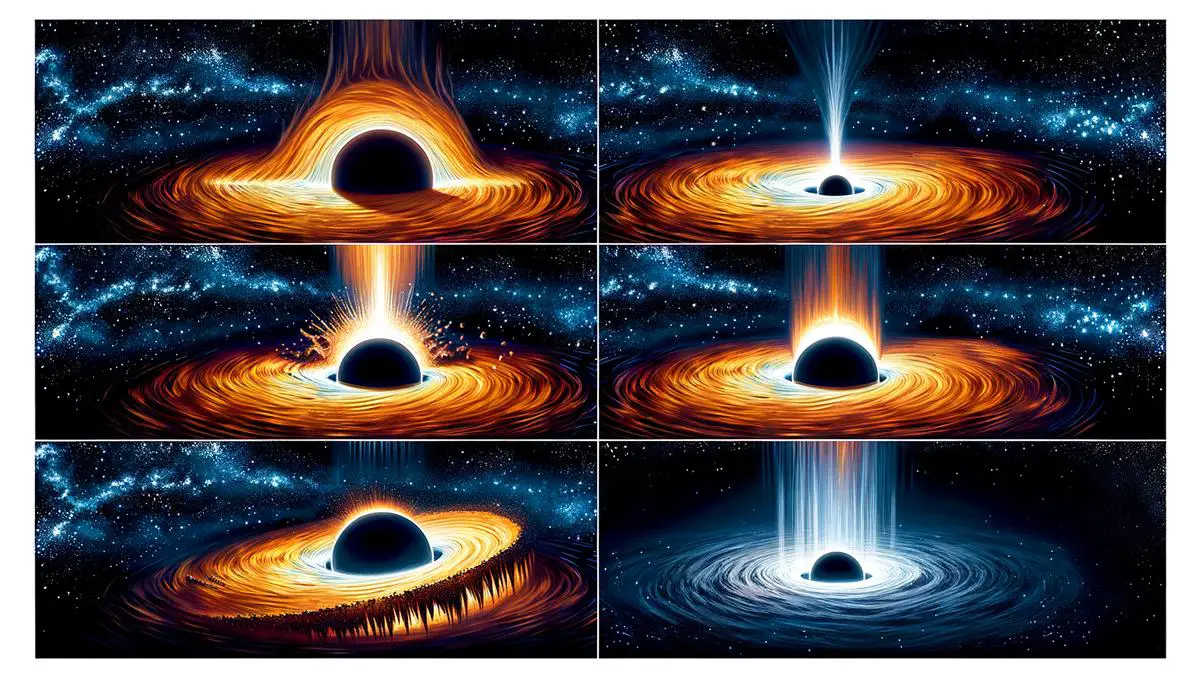
Singularities: The Heart of Black Holes
Within the heart of black holes lies the enigmatic singularity. This singularity is a region where matter is compressed to extreme density and size, a state where conventional physical laws cease to be applicable. The idea of a singularity is a mathematical inevitability derived from Einstein's General Relativity. When matter collapses into a black hole, it continues to be compressed into an ever-smaller volume until it reaches a point where the density becomes extreme.
The properties of singularities challenge our understanding of physics. Extreme density suggests that the gravitational field at the singularity is incredibly strong, leading to a breakdown of spacetime itself. Standard physics equations, which govern our everyday experiences and even the movements of planets and stars, falter at the singularity. The fabric of spacetime, according to general relativity, curves dramatically at this point, making predictions difficult.
"The singularity is where the known laws of physics break down, offering us a glimpse into the limits of our current understanding."
This discomfort arises because the singularity marks the limits of known physics. Quantum mechanics and general relativity give incompatible descriptions near the singularity. While general relativity predicts extreme density, quantum mechanics suggests that such extremes should be avoided. The result is a theoretical impasse, prompting the search for a new, unified theory of quantum gravity that could reconcile these divergent views.
Physicists and cosmologists spend considerable time speculating about what singularities might truly represent. Are they mathematical artifacts, indicating the limits of our equations? Could they signal the birth of new physics, revealing unexpected phenomena? The questions are numerous and complex, and uncovering the answers requires venturing beyond the scope of current scientific understanding.
Black holes and their singularities serve as cosmic laboratories, pushing our understanding to the extremes and challenging the most fundamental principles of physics. They remind us that while we have come a long way in our quest to understand the universe, there is still much to learn. Singularities stand as both puzzles and opportunities, driving scientific inquiry into the profound mysteries of existence.
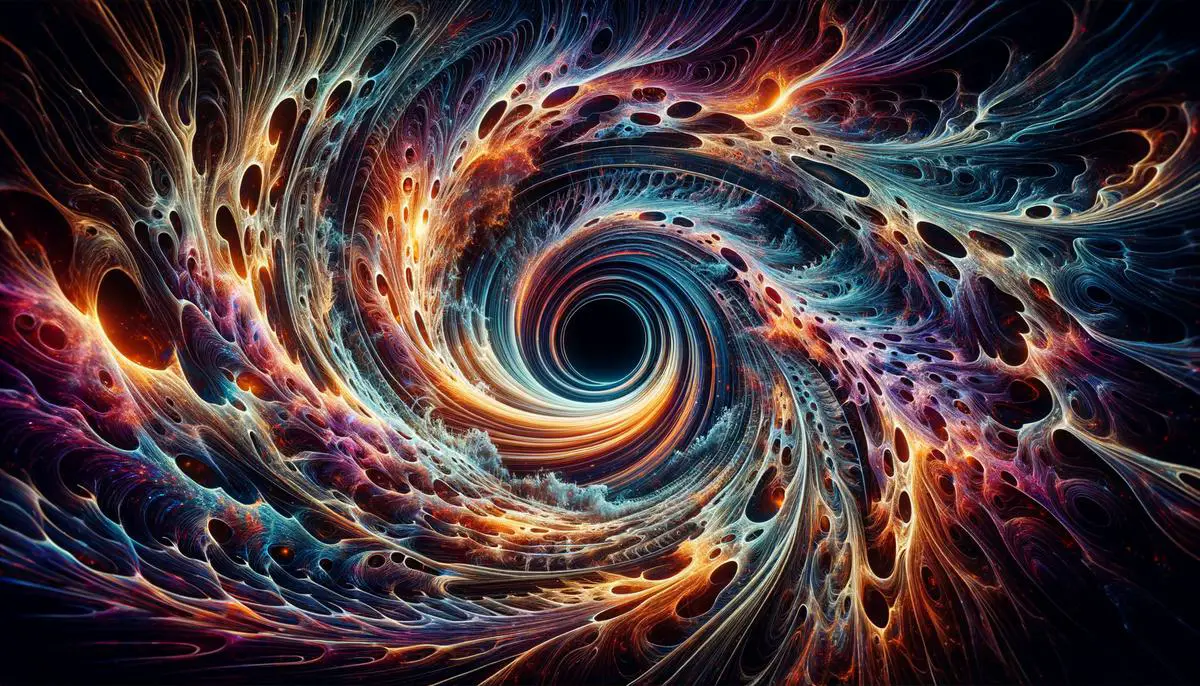
Event Horizon and Its Implications
The event horizon marks a boundary where the gravitational pull becomes so intense that escape is impossible, even for light. This "point of no return" is pivotal in understanding the behavior of matter and light near black holes and shapes much of what we know—or don't know—about these cosmic giants.
The event horizon isn't a physical surface, but a threshold in spacetime itself. Anything crossing this boundary is irretrievably lost; no information, no matter, no radiation can return to the outside universe. This makes the event horizon a formidable barrier against observation, ensuring the black hole's interior remains shrouded in mystery.
Effects near the Event Horizon:
- Spaghettification: Objects experience extreme stretching due to gravitational gradients
- Time dilation: Time appears to slow down for objects approaching the event horizon
- Gravitational redshift: Light loses energy and shifts towards longer wavelengths
The implications of the event horizon extend to fundamental physics principles, especially those concerning information. The "information paradox" arises because, according to quantum mechanics, information about the physical state of matter should never be lost. However, once inside a black hole, the information carried by matter ostensibly disappears beyond the event horizon. This paradox remains one of the most tantalizing puzzles in theoretical physics.
There have been many attempts to peer beyond the event horizon indirectly. Techniques such as observing the behavior of matter just outside the event horizon, studying gravitational waves generated from black hole mergers, and scrutinizing the radiation emitted by accretion disks provide some clues. However, these methods can only infer so much, and the event horizon continues to mask a deeper understanding of black holes' inner workings.
In summary, the event horizon stands as a profound boundary in our universe, defining the limits of where our physical laws can take us. It not only encapsulates the black hole's singularity but also challenges the very foundation of our understanding in ways that intrigue scientists. Its existence serves as a cosmic reminder of the dynamic nature of the universe we inhabit, encouraging continual exploration into the depths of these celestial enigmas.
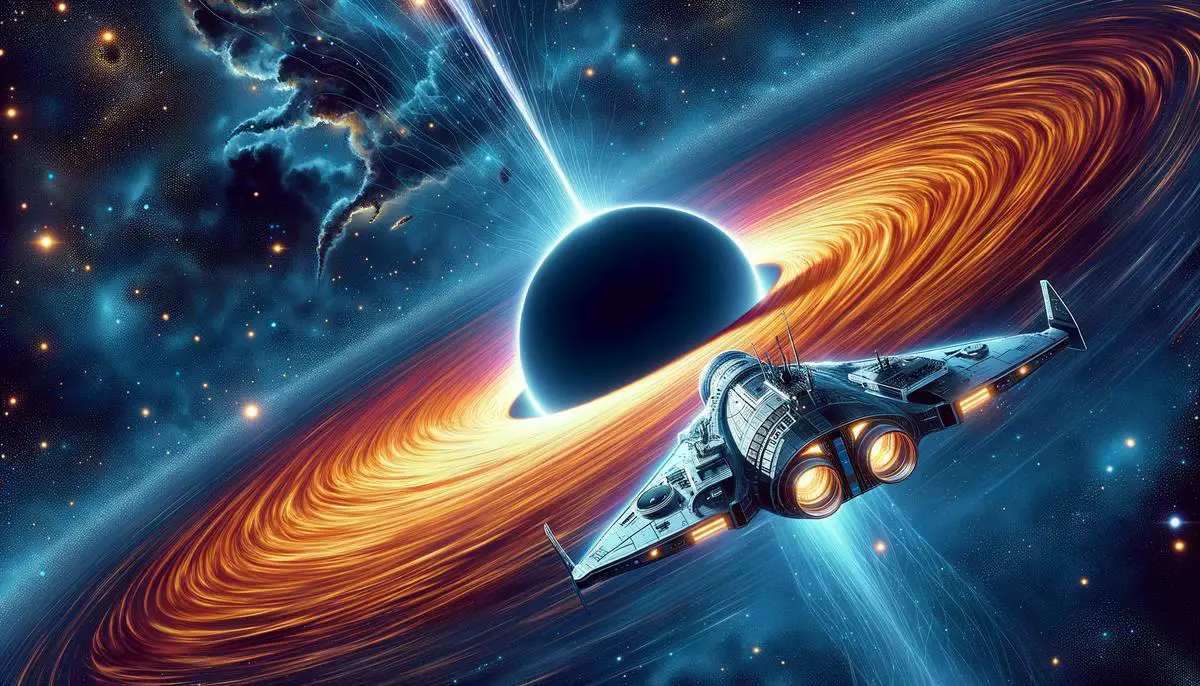
Theoretical Alternatives to Singularities
Theoretical alternatives to singularities, such as Planck stars and gravastars, have emerged, aiming to resolve some of the profound issues that singularities pose.
Planck Stars:
Planck stars, proposed within the framework of loop quantum gravity, suggest that instead of matter being compressed into an infinitely tiny, infinitely dense point, there exists a smallest physical size limit, known as the Planck length. This quantization of spacetime precludes the formation of a singularity, effectively putting a natural "stop" to the collapse. The result is a Planck star, a minuscule but finite ball of matter rather than an infinite void.
The appeal of Planck stars lies in their foundation in loop quantum gravity, a theory that aims to merge general relativity with quantum mechanics. As the collapsing matter reaches this Planck-length threshold, the quantum properties of spacetime resist further compression. This creates a stable configuration, circumventing the infinite densities that singularities predict.
Gravastars:
Gravastars offer another alternative. Originally conceived nearly two decades ago, gravastars imagine black holes not as regions terminating in singularities but as entities filled with dark energy—a mysterious force observed to fuel the accelerating expansion of the universe. This model proposes that instead of crossing an event horizon into an abyss, matter is halted by a shell of dark energy, never reaching infinite density.
The gravastar theory addresses singularities' problematic infinities by supplanting them with more manageable, finite geophysical properties. It aligns with current cosmological observations of dark energy, staying consistent with our broader understanding of the universe. Some evidence suggests that merging gravastars might produce different gravitational wave signatures than black hole mergers, an assertion which ongoing and future observations by facilities like LIGO and Virgo may corroborate1.
These theoretical constructs arise to bridge the gaps and offer alternative mappings of the colossal gravitational terrain inside black holes. While current technologies and methods do not yet afford complete validation of Planck stars or gravastars, they embody the progressive edge of research. Their pursuit underscores the scientific method's drive to refine, challenge, and expand our comprehension of the universe's most extreme environments.
Exploring Planck stars and gravastars invites not only a better grasp of black holes but also propels us closer to achieving a grander synthesis of quantum and gravitational physics. As research continues, these theories hold the potential to illuminate the darkest corners of our cosmos, offering insights into areas where singularities reign no longer.
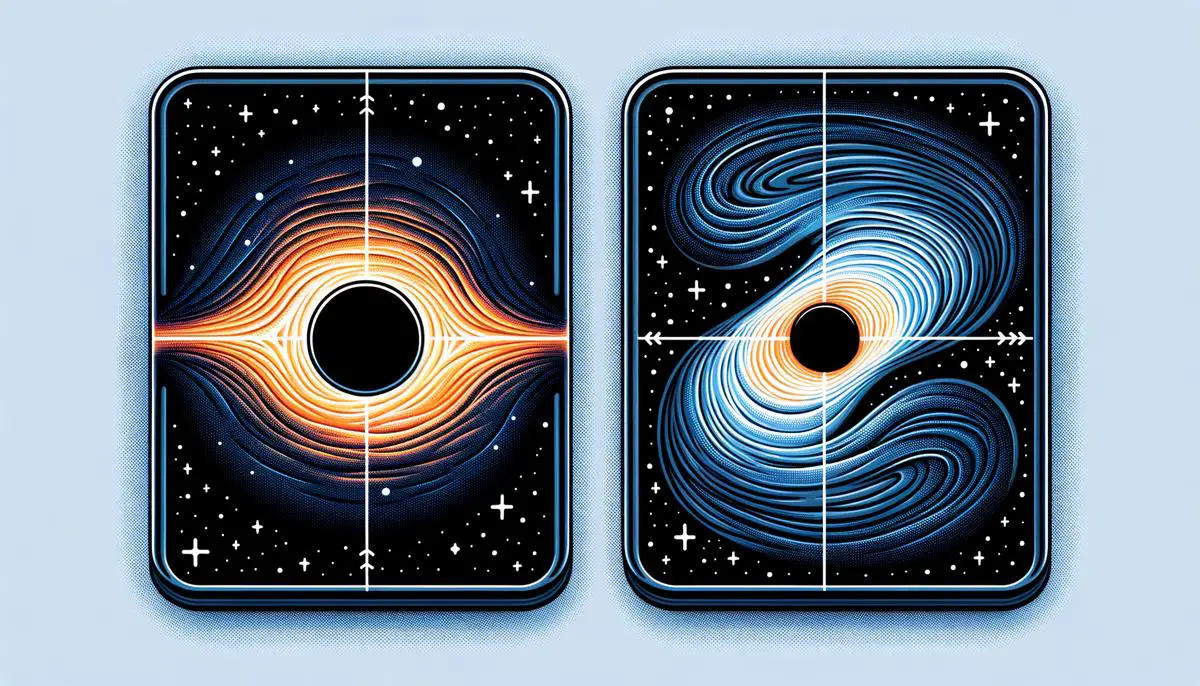
Quantum Mechanics and Black Holes
Black holes, predominantly understood through general relativity, present a formidable puzzle when viewed through the lens of quantum mechanics. General relativity elegantly describes the macroscopic universe, including the gravitational behaviors of massive objects and the curvature of spacetime. Conversely, quantum mechanics governs the microscopic world, detailing the probabilistic nature of particles and their interactions at atomic and subatomic scales. The conflict between these two frameworks near black holes highlights the need for a unifying quantum theory of gravity.
A key example of this conflict is the formation of singularities inside black holes, as predicted by general relativity. These are regions where density and gravitational forces become infinite, causing the laws of physics to break down. However, quantum mechanics inherently disallows such infinite values due to its principles of uncertainty and probabilistic states.
Hawking radiation further exemplifies this conflict. Proposed by Stephen Hawking, this phenomenon suggests that black holes emit particles due to quantum effects near their event horizons, implying that black holes can lose mass and energy, and eventually evaporate. This contradicts general relativity's prediction that nothing should escape a black hole once past the event horizon.
The quest to reconcile these disparate areas focuses on developing a quantum theory of gravity. Theoretical frameworks like string theory and loop quantum gravity are at the forefront of this endeavor:
- String theory posits that all fundamental particles are one-dimensional strings whose vibrational modes correspond to various particle types. It predicts the existence of extra spatial dimensions and suggests that gravity emerges from the vibrations of hypothetical gravitons.
- Loop quantum gravity approaches the problem by quantizing spacetime itself, considering it a lattice of discrete chunks. This perspective offers insights like Planck stars, which could be the core remnants within black holes instead of singularities.
The difficulty in harmonizing these theories lies in their context-specific applicability. General relativity excels in describing massive, slow-moving objects and large-scale structures, while quantum mechanics explains the behavior of tiny, fast-moving particles. Black holes, with their immense mass compacted into infinitesimal volumes, demand an integrated theory that handles both extreme scales simultaneously.
Researchers are examining these theories via computational simulations, high-energy experiments, and astronomical observations. Facilities like the LIGO and Virgo gravitational wave detectors provide crucial data on black hole mergers, potentially revealing subtle deviations from predictions that might hint at new physics. Similarly, instruments like the Event Horizon Telescope aim to capture detailed images of black holes, providing empirical grounds to test various theoretical predictions.
Despite these efforts, a complete and experimentally verified quantum theory of gravity remains elusive. This ongoing pursuit not only promises to unlock the mysteries of black holes but also to deepen our understanding of the universe's fundamental nature.
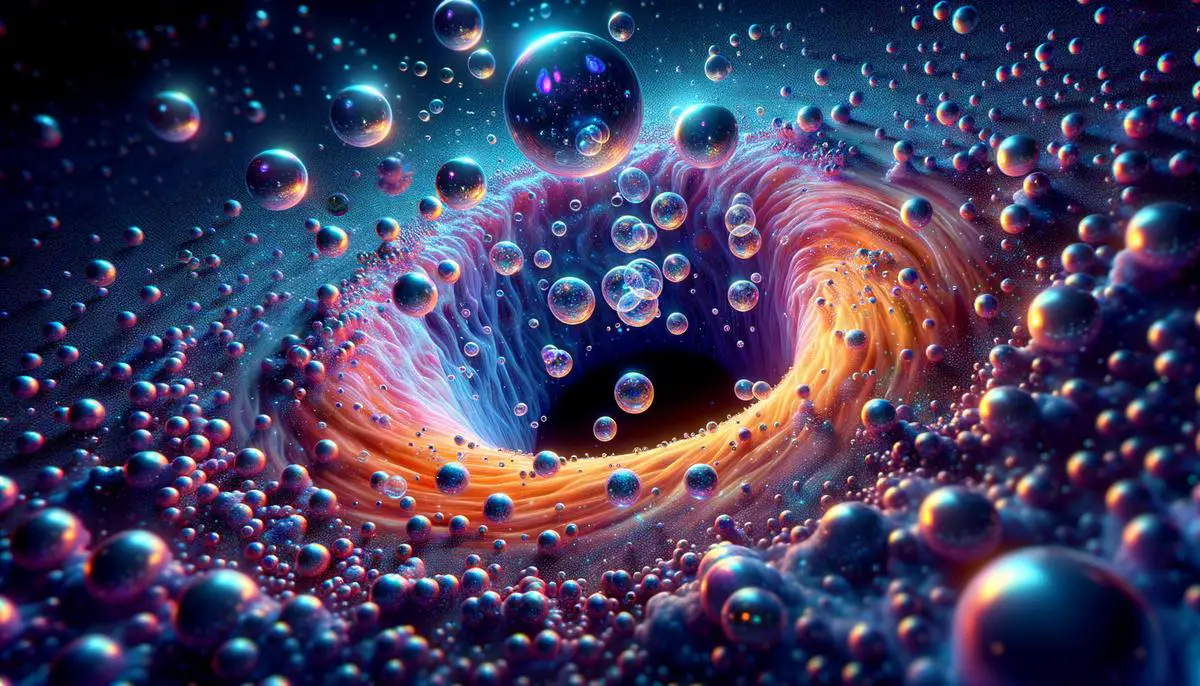
Observational Evidence and Future Research
Recent advancements in observational techniques have significantly enhanced our understanding of black holes. The gravitational wave detections by the LIGO and Virgo observatories have provided compelling evidence for the existence of these cosmic objects. When massive celestial bodies such as black holes merge, they emit ripples in spacetime—gravitational waves—that travel across the universe. LIGO's first detection in 2015 confirmed the existence of such waves, a prediction made by Einstein a century earlier1.
Electromagnetic observations have also contributed valuable insights. The Event Horizon Telescope (EHT) achieved a breakthrough in 2019 by capturing the first direct image of a black hole's event horizon in the galaxy M87. This iconic image revealed a bright ring of superheated material surrounding a dark shadow, validating theoretical models and providing visual confirmation of a black hole's gravitational effects on nearby matter2.
These observations work in concert to affirm our understanding of black holes and their properties. For example, simultaneous detections of electromagnetic signals and gravitational waves from neutron star mergers offer rich data sets that enhance our comprehension of the extreme behavior of matter and energy in the vicinity of black holes.
Looking forward, future research aims to deepen our understanding and uncover new phenomena:
- Next-generation gravitational wave observatories, like the Einstein Telescope and the Cosmic Explorer, promise to enhance sensitivity and detection range, potentially capturing fainter waves from smaller black holes formed in the early universe.
- Improvements in the EHT's capabilities are expected to provide higher-resolution images of black holes, specifically the supermassive black hole at the center of our galaxy, Sagittarius A*.
- Advancements in computational astrophysics will allow researchers to model black hole environments with greater accuracy, testing hypotheses about black hole formation, relativistic jet emissions, and the behavior of matter under extreme gravitational forces.
- Ongoing efforts to reconcile general relativity with quantum mechanics continue, aiming for a unified theory that describes both the macroscopic world of black holes and the microscopic realm of quantum particles.
The integration of new technologies, observational campaigns, and theoretical advancements promises to not only deepen our understanding of these gravitational behemoths but to potentially uncover entirely new aspects of the cosmos. As we stand on the precipice of these discoveries, it's an exciting time for astrophysics, beckoning the next generation of explorers to unlock the universe's most enigmatic secrets.
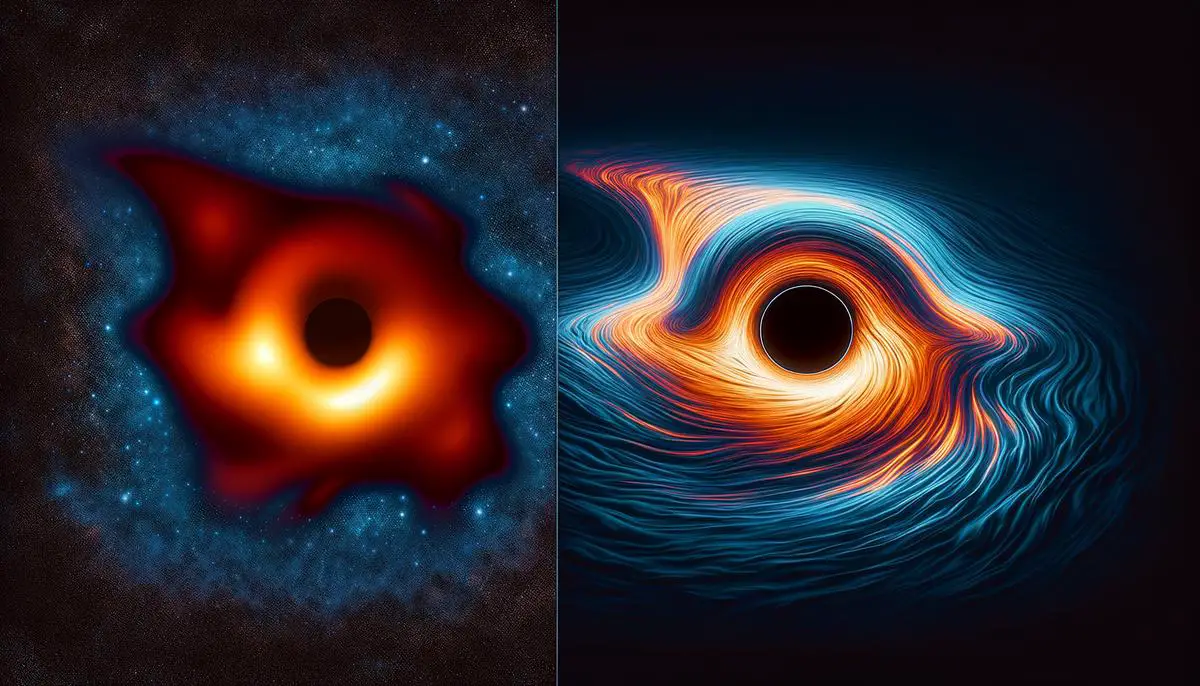
In essence, black holes serve as both monumental puzzles and opportunities for scientific exploration. They challenge our perception of reality and highlight the boundaries of our knowledge. Understanding these celestial enigmas may one day unlock new areas of physics, contributing to our comprehension of the universe's most extraordinary phenomena.
![]()
